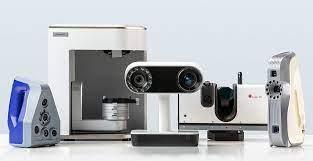Introduction
In a world driven by technological advancement, 3D scan stands as a testament to the remarkable fusion of digital innovation and the physical world. This transformative technology has ushered in a new era of precision, accuracy, and creativity across various industries. In this article, we will embark on a journey through the captivating world of 3D scanning, shedding light on its core principles, applications, and the profound impact it has on our lives.
- The Essence of 3D Scanning
At its core, 3D scanning is the process of capturing the physical world in digital form, creating a highly accurate, three-dimensional representation of objects, environments, or even people. Here's how it works:
- Data Capture: 3D scanners utilize various technologies, such as laser, structured light, or photogrammetry, to collect data points from the surface of the object being scanned.
- Data Processing: The collected data points are processed and transformed into a digital 3D model, often referred to as a point cloud or mesh. Advanced software helps align and merge these data points into a coherent representation.
- Visualization: The resulting 3D model can be visualized, manipulated, and analyzed on a computer or other compatible devices. This digital replica can be used for a wide range of purposes.
- Applications Across Industries
The versatility of 3D scanning technology has led to its widespread adoption across diverse sectors:
- Manufacturing and Engineering: 3D scanning plays a pivotal role in product design, quality control, and reverse engineering. Manufacturers use it to create precise digital representations of physical prototypes, allowing for rapid prototyping and design optimization.
- Healthcare: In the medical field, 3D scanning is used for applications such as creating custom prosthetics, orthodontic treatments, and patient-specific surgical planning.
- Culture and Heritage Preservation: Museums and cultural institutions employ 3D scanning to digitally archive historical artifacts, sculptures, and archaeological sites, preserving them for future generations.
- Entertainment and Gaming: The entertainment industry relies heavily on 3D scanning to capture actors, props, and environments for use in movies, video games, and virtual reality experiences.
- Construction and Architecture: Architects and construction professionals use 3D scanning to document construction progress, assess structural integrity, and plan renovations accurately.
- Advancements and Future Possibilities
As technology continues to evolve, 3D scanning is poised for further breakthroughs and innovations:
- Miniaturization: The development of compact and portable 3D scanners is making this technology more accessible to a broader audience, including consumers and small businesses.
- Real-time Scanning: Advances in hardware and software are enabling real-time 3D scanning, making data acquisition faster and more efficient.
- Increased Automation: Future 3D scanners will likely feature improved automation, simplifying the scanning process and reducing the need for manual intervention.
- AI Integration: The integration of artificial intelligence and machine learning will enhance 3D scanning's capabilities, enabling automatic object recognition, data analysis, and quality control.
- Cross-industry Collaboration: 3D scanning will continue to bridge industries, driving collaboration and innovation between traditionally separate sectors.
Conclusion
The world of 3D scanning is a testament to the remarkable capabilities of modern technology, blurring the lines between the physical and digital realms. From revolutionizing manufacturing and healthcare to preserving our cultural heritage and transforming entertainment, 3D scanning's impact is profound and far-reaching.
As this technology continues to advance, we can anticipate even more exciting possibilities on the horizon. Whether it's the creation of highly detailed digital replicas or the development of innovative applications, 3D scanning is shaping the way we interact with the world around us. It is a transformative force that is only beginning to reveal its true potential, promising a future filled with precision, creativity, and boundless innovation.
